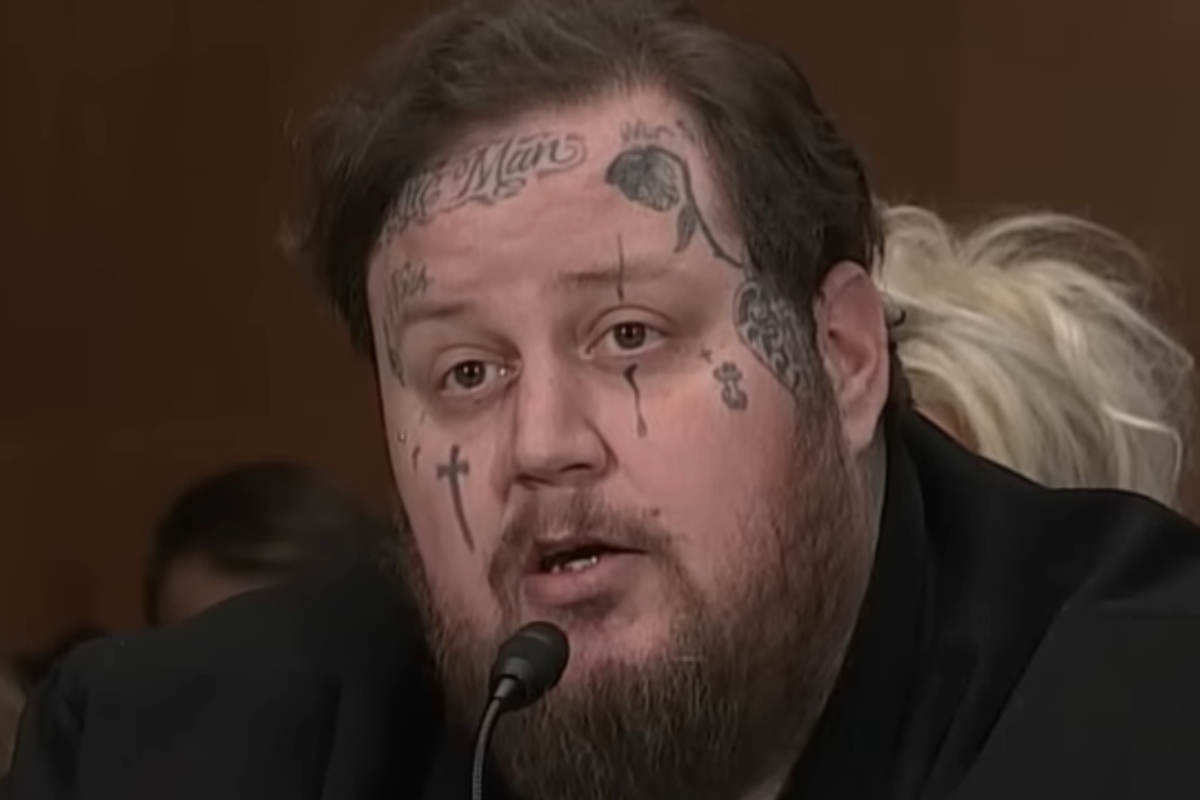Jelly Roll invites inmates to perform with him on stage and brings people to tears
Jelly Roll knows firsthand what this kind of representation can do.
Jelly Roll has inmates perform at his concert, moving people to tears.
Jelly Roll is an American rapper and singer that has shot to the top of the charts in recent years with his hit songs "Save Me" and "Need A Favor." He's been vocal about his rough start in life that involved drugs and multiple trips to jail before he eventually earned his GED while incarcerated and dedicated himself to finding a different way to live life.
The singer uses his experiences to not only reach audiences through his music but through the stories he tells. Jelly Roll never shies away from all the things he's been through in life, so it shouldn't be surprising that he looks for ways to give back to people who have found themselves in similar situations, often visiting correctional facilities in tour cities.
Recently his tour took him to Chesterfield, Virginia, where he of course stopped by the county jail to speak to the inmates. But this time, instead of performing for them, some of the inmates performed for him. Jelly Roll was blown away by their talent and before his scheduled performance decided to take a chance by asking the sheriff if the inmates could join him on stage. It's probably safe to assume this isn't a regular request for the sheriff, but he decided to oblige the singer.
The inmates got to show up in street clothes, joining the singer on stage to sing his single, "Unpretty," which is a song one of the prisoner's sang for Jelly Roll earlier in the day. The artist uploaded a highlight reel to his Instagram page with the caption:
"One of the most special moments of my career happened last night. Before the show, I had the honor of stopping by a jail in Chesterfield, Virginia where they have a program called Helping Addicts Recover Progressively (HARP). I’ve had the pleasure of getting to visit and talk to the folks in this program before, but this time something surreal took place. Sheriff Leonard allowed 4 members of the program to not only come to the show, but come on stage and perform the music with me.
I don’t know what it was about me, but I only ever believed things could happen whenever I got close enough to see them happening in front of me. My hope with bringing these men out on stage with me is that they can see a larger picture of what life can become. The place they’re in now is not the end, and the future can be so much more than their wildest dreams. I can never thank and praise the HARP program enough for making this happen, the work they’re doing is truly invaluable."

In another video posted to Jelly Roll's Instagram page, you can see the inmates perform from the audience viewpoint and you can tell the men are taking full advantage of the once-in-a-lifetime opportunity. If they were nervous, there was no indication of it because the four men sang, rapped and played the guitar. There was true talent in that group, and they got to showcase it to hundreds of screaming fans.
Under the highlight reel, a fan speaks highly of the program that allowed the inmates to experience a Jelly Roll concert from the stage, writing, "I been in that program. You leave with a different mindset. The sheriff is a good man, and really trying to make a difference. We appreciate you jelly for all you do."
The Chesterfield Virginia account also show their appreciation, "Thank you so much for coming to our jail and loving on our inmates! It meant the world."
Celebrities, congresspeople and fans can't seem to get enough of Jelly Roll's action of reaching back to show people headed down the wrong path a new direction.
Tulsi Gabbard says, "Tears streaming down my face. Thank you @jellyroll615 for your heart, and the love you have shown to these men. I felt God’s presence and love on that stage and in our hearts."
Lenny Kravitz writes, "Yes! Let Love Rule brother!"
One person shares, "THIS is what using your platform is meant to achieve! This was life changing and powerful and inspiring and motivational. It’s this type of energy & work that social media is at its best. This is reconciliation work! You are helping us to grow closer and closer to what true reconciliation can be. I think of what it truly means to have an entire audience cheering you on when you are in a position, as these men are, at this time of their lives. THANK YOU!"
Someone else chimes in, "I just got goosebumps. Wow the end singer. They are never going to forget the opportunity both you and the sheriff gave them."
This truly is something these men will never forget, but the audience will also never forget it. Jelly Roll loudly and boldly proclaimed that prisoners are worth the effort to redeem by taking a chance and putting them on stage. This moment will be forever imprinted in the minds of the inmates and others, encouraging growth and life changes.
